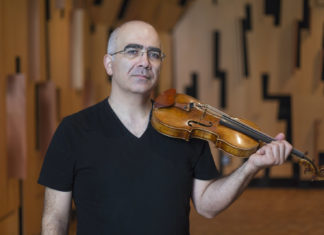By Dr. Arpi Sarafian
In June 2020, the United States Supreme Court ruled to uphold the DACA Program which provides protection from deportation to eligible undocumented immigrants who arrived in the United States as children. Repealing the Program would deny the 800,000 DACA recipients, known as Dreamers, access to our universities and to better job opportunities. The Supreme Court ruling was hailed by many as a victory for justice and for America.
Micheline Aharonian Marcom’s recently published novel, The New American (Simon & Schuster, 2020), reaffirms America as a country of immigrants.
“The mixing of the blood on this land continues. We are here, we remain, the new Americans,” says Emilio, a Dreamer himself, at the conclusion of the book. The novel is an account of the journey North of Emilio Ramos Matias, a second-year UC Berkeley student who is taken into custody, and eventually deported to his native Guatemala, handcuffed and in chains, because he could not provide a valid ID when involved in a car accident outside the protection of his city.
In Guatemala, Emilio feels “lonely and out of place.”
“I don’t belong here,” he thinks, and decides to return “home” to California to resume his studies and fulfill his dream of a “better” life.











